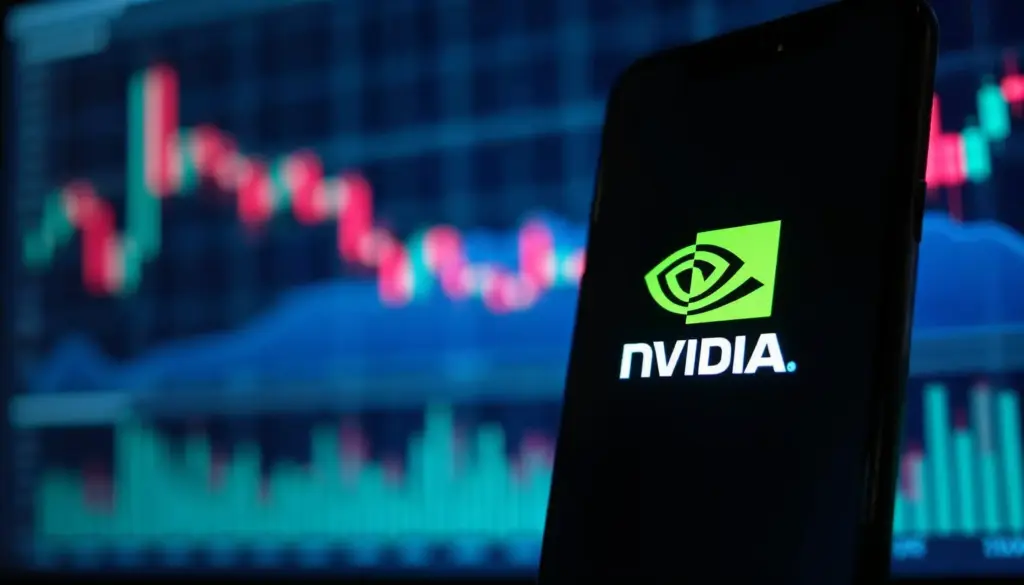Blogs

1 | Context—A Coil Ready to Spring Prelude – A Textbook Case of Constrained AbundanceOn 9 July 2025 Nvidia’s market value punched through the $4 trillion barrier, giving it the heaviest single weighting in the S&P 500 at roughly 7.3 percent—and cementing a year-to-date gain of just over 22 percent after a blistering 74 percent rebound from April’s lows. Investors aren’t simply buying headlines; they are paying forward for a scarce, high-utility input that almost every major AI roadmap now requires. 1 | Supply: The Hard Limits of Physics and Factories CoWoS bottleneck. TSMC’s 2025 expansion doubles CoWoS output to roughly 200 k wafers/year, but Nvidia pre-emptively contracted ≈60 % of that slab, leaving the rest for AMD, Tenstorrent, specialty ASIC vendors, and internal hyperscaler designs. HBM3e memory squeeze. Micron and SK Hynix are running at full utilization, and while Samsung’s late-2025 capacity adds relief, HBM layers still define the yield ceiling of every B200 or MI350X package. TDWI’s survey of AI-server supply chains in 2024 found lead times stretching to 50 weeks—a lag that has barely improved. Packaging yield curvature. Advanced-node reticle limits mean that chiplets are stitched via NVLink and NVSwitch fabrics, and every mm² saved on silicon is lost to interposer real estate. Failure at any layer forces scrapping of entire substrates, which keeps effective supply below nameplate capacity. 2 | Demand: The Era of AI-First Capital Allocation Nvidia’s customers are no longer limited to cloud titans. Sovereign AI labs in Saudi Arabia and the UAE now budget multi-billion-dollar clusters; pharmaceutical giants need generative chemistry accelerators; and automotive OEMs require fleet-scale inferencing for autonomous systems. Hyperscaler CapEx: >$330 bn projected for 2025, with >40 % earmarked for accelerated compute. Enterprise AI adoption: Gartner’s 2025 CIO survey shows 67 % of Global 2000 firms will run at least one large-language-model workload in-house—double 2023 figures. Each incremental LLM fine-tuning cycle consumes tens of thousands of GPU-hours. Demand growth is therefore convex: every new use-case recruits more developers to the CUDA ecosystem, which in turn spawns more models requiring more GPUs—a self-reinforcing spiral. 3 | Product Roadmap: From Hopper to Blackwell and Beyond Nvidia timed the Blackwell architecture launch to coincide with the supply ramp. The B200’s 208-billion-transistor die stack halves energy per token versus H100 and introduces hardware-level schedule-steered transformers. Early benchmarks show 1.8× training throughput for GPT-4 class models. Customer pre-order queues stretch into mid-2026, and some CSPs are already booking 2027 allocation as insurance. What if AMD’s MI350X or Intel’s Gaudi 3 achieve parity? Even in that hypothetical, the CUDA/CuDNN moat persists; porting production pipelines carries switching costs in the tens of millions. Thus, incremental supply from competitors may relieve scarcity but is unlikely to collapse Nvidia’s pricing power. 4 | Pricing Power: ASP Inflation Without Demand Destruction Average selling prices for full-stack HGX server trays rose from $350 k in 2023 to north of $600 k in 2025. Yet CIO budget surveys show the ROI payback period shrank because each incremental GPU-hour yields more sophisticated AI outputs, monetizable products, or productivity gains. In economic terms the value elasticity of demand is exceptionally low. At the margin, Nvidia has begun to auction scarce inventory through “capacity reservation fees”—non-refundable deposits reminiscent of foundry booking models. This pricing innovation transfers supply-chain risk away from Nvidia and embeds an option premium into ASPs, further amplifying operating leverage. 5 | Secondary Demand Catalysts – Robotics, Digital Twins, and the Physical-AI Stack Robotics entered the mainstream when Nvidia unwrapped Isaac GR00T as an open, generalized foundation model for humanoid reasoning. By coupling GR00T-Dreams synthetic-motion generation with Omniverse’s photoreal simulation, developers can iterate robot behaviors entirely in silico before flashing them to edge-compatible Jetson-or Blackwell-based controllers. The effect on demand is twofold: It pulls GPUs into simulation-heavy engineering workflows months before the first physical robot ships. It locks developers into Nvidia’s vertical stack, guaranteeing inference demand once robots deploy at scale. Add automotive “digital twin” workloads and emerging AR/VR rendering demands, and you find a multi-vector growth funnel that compounds the already voracious appetite from large-language-model training. 6 | Relative Value Through a Supply-Demand Lens Traditional valuation models may flag Nvidia as rich at 37× forward earnings, but the denominator (earnings) is a moving target. Street models have lifted FY-2027 EPS estimates by 40 % in just five months. Peers look cheaper optically yet face the exact same bottlenecks with far less pricing power – AMD at 38× forward earnings but with <15 % GPU market share; Intel at 82× while still loss-making. In a market governed by scarcity, capital flows to whoever controls the choke-points. Nvidia not only controls the silicon but also the software, the networking fabric, and increasingly the reference system designs. That ecosystem control is why its multiple refuses to mean-revert. 7 | Risk Factors – What Could Break the Flywheel? Foundry or substrate shock: A unplanned outage at a CoWoS line could ripple across the entire AI industry. Vertical Integration by Hyperscalers: Amazon’s Trainium 3 or Google’s Axion may siphon off captive demand, yet both depend on external foundry and HBM supply, touching the same bottlenecks. Regulatory Pressure: The U.S. export-license regime already restricts high-end GPU sales to China; any broadening of controls could dent revenue, though Nvidia has responded with downgraded SKUs that still command premium margins. Technology Disruption: A leap in photonic or neuromorphic compute could bend the demand curve, but commercial timelines remain uncertain. Conclusion – When Scarcity Itself Becomes the Product Nvidia’s 2025 surge is not solely the triumph of visionary leadership or cutting-edge architecture; it is the monetization of scarcity at the exact moment an exponential demand function goes vertical. As long as advanced-packaging throughput, HBM layers, and developer mindshare remain constrained, Nvidia’s ability to levy an ‘AI-infrastructure tax’ persists. Investors must therefore frame valuation not in the static terms of classical semiconductors but in the dynamic regime of a platform monopolizing both hardware physics and software dependencies. Until one of the identified shocks materializes, the supply-demand flywheel will likely keep spinning—and with it, the equity story remains a bid rather than an ask.

1 | Context—A Coil Ready to Spring For nearly three weeks Bitcoin has traced an increasingly snug ascending triangle. Each pull-back has halted at progressively higher troughs—$103 800 early in June, $105 400 late in the month, and $107 000 at the start of this week—while every assault on resistance has stalled just beneath $110 500. The result is an unusually tight $3 000 box that has compressed realised volatility to its lowest reading in two months. Technical gauges echo that tension: four-hour Bollinger Bands contracted on 8 July to their narrowest width in roughly ninety days, a pattern that often precedes a powerful range expansion. Macro noise is fuelling the stalemate. President Trump’s decision to delay—but not dial back—a 50 % copper tariff keeps geopolitical risk simmering, periodically knocking BTC below $108 000 before bargain-hunters step in.Meanwhile, traders are increasingly convinced the Federal Reserve will deliver as much as 75 basis points of easing before November, a “stealth-cut” path that steadies the bid for duration-sensitive assets such as Bitcoin. 2 | Why Rotate Rather Than Buy-and-Hold a Single ETF? The spot-Bitcoin ETF landscape now spans ten tickers, from BlackRock’s dominant IBIT to boutique funds like DEFI. On Monday the complex turned over about $2.9 billion; IBIT alone captured roughly 80 % of that flow, leaving smaller funds to play catch-up. Because these vehicles all chase the same underlying asset yet exhibit distinct liquidity, fee structures, and primary-market frictions, their net-asset-value (NAV) slippage diverges intraday. A nimble trader who rotates capital—buying a temporarily discounted fund, shorting one that has drifted to a premium, or shifting into a thinner, higher-beta product when a breakout looks imminent—can pocket incremental alpha on top of whatever beta Bitcoin ultimately delivers. 3 | Technical State of Play on 9 July Momentum is neutral but coiled. The four-hour RSI hovers near 52, signalling neither over-extension nor hidden divergence, and the MACD has just flashed a tentative bullish cross that needs follow-through. All key exponential moving averages from the 20-period to the 200-period are stacked between $106 400 and $107 500, preserving an orderly up-trend beneath price. Options markets confirm topside tension: call open interest is heaviest between $110 000 and $112 000, so a decisive breach of $110 500 could ignite a gamma squeeze. At the same time on-chain data show the short-term-holder realised cost basis near $101 700, implying that forced selling pressure should remain muted as long as spot does not sink below $102 000. 4 | A Four-Phase Game Plan Phase 1 – Compression WatchWhile the triangle remains intact, opportunistic trades revolve around fleeting NAV distortions. If FBTC widens to a ten-to-twenty-basis-point discount versus IBIT and five-minute realised volatility is running below 15 % annualised, scoop up FBTC and hedge the delta with micro-BTC futures. Exit when the discount snaps back to par. Phase 2 – Breakout ConfirmationShould Bitcoin close a four-hour candle above $110 500 and thirty-minute realised volatility jump past 45 %, shift into ARKB, the thinnest of the high-liquidity funds, to harness greater beta. Overlay out-of-the-money $112 000 weekly calls to monetise skew. Bail out if the daily close slips under $108 800. Phase 3 – Retest and AddBreakouts often retest their former ceiling. If spot sinks to the $109 250–$108 800 shelf without violating it, rotate into GBTC—its larger creation unit and legacy shareholder base translate into fatter risk-adjusted carry once the premium compresses below 0.2 %. Phase 4 – Exhaustion or FailureTwo bearish reversal candles near the Fibonacci extension target at $115 800, especially against the backdrop of heavier ETF redemptions, demand defence. Short an equal-weighted basket of the least liquid spot funds—BITB and DEFI are typical culprits—against an IBIT long. Liquidate when back-to-back redemption days hit or if the VIX surges past 25. 5 | Sizing With Volatility-Scaled Kelly Logic Ten-day ex-ante volatility sits near 28 %. If your strategy aims for a one-sigma Sharpe, raw Kelly maths spits out a leverage factor just above 1.1. Because ETF tracking-error adds a layer of uncertainty, cap the allocation at roughly 0.7 Kelly: devote 70 % of your risk budget to the rotation basket and 30 % to convex option structures that profit if realised volatility explodes. 6 | Macro Regime Filters to Keep on the Dashboard Tariff Risk: The copper-tariff start date is fixed for 1 August and presidential rhetoric remains fiery. Maintain partial hedges and favour defensive entries until the fog clears. Monetary Policy: Money-markets presently discount 75 basis points of Fed easing before year-end, a glide-path that historically boosts Bitcoin’s duration appeal—tilt your bias bullish as long as real yields drift lower. Gold Inflows: Physically backed gold ETFs attracted $38 billion in the first half of 2025, their heftiest haul in five years, underlining a wider flight toward hard-asset hedges that naturally spills over into the “digital-gold” realm. Crypto Fund AUM: Morningstar data show dedicated crypto funds swelling to a record $167 billion after June’s $7 billion inflow, evidence of a structural bid that encourages buying dips rather than fading rallies. 7 | July Seasonality and Execution Nuances Mid-July rebalancing by managers tracking the Bloomberg Galaxy Crypto Index can distort flow, often stoking temporary mis-pricings in FBTC and ARKB—fade those extremes but resist the temptation to front-run until the DTCC print confirms creations or redemptions. Liquidity typically thins during Asia’s pre-dawn hours; avoid leaving resting stops in the skinnier ETFs during that window and use CME micro futures for hedging instead. 8 | Three Probable Paths From Here Clean Break-Up (40 % likelihood): Spot accelerates to $115 800. Ride ARKB higher, pyramiding incremental units while ratcheting a trailing stop to $111 000. Sideways Extension (35 %): Bitcoin remains bottled between $105 400 and $110 400. Work the FBTC-versus-IBIT spread, capturing NAV gaps and resetting positions every week. Break-Down (25 %): A bearish unwind drags price toward $100 200. Flip net-short via BITO and reinforce the stance with $100 000 strike puts to guard against overnight air-pockets. 9 | Known Unknowns—Key Risk Catalysts A surprise Mt. Gox creditor disbursement exceeding 100 000 BTC would swamp ETF creations and invalidate bullish flow signals; flatten exposure the moment custodial-wallet trackers flag such a move. Separately, any adverse regulatory action—such as an SEC Wells notice aimed at Coinbase Custody—could widen ETF discounts abruptly; in that event pivot toward futures or European ETCs to diversify custodian risk. 10 | A 72-Hour Checklist Watch $110 500. If aggregate ETF turnover tops $4 billion while spot conquers that level, initiate the breakout strategy at once. Track end-of-day NAV premiums. Readings above 0.3 % have reverted roughly 80 % of the move within two sessions this quarter. Parse the DTCC share-count file at 22:00 UTC. Two consecutive creation days larger than 8 000 BTC have preceded five-to-eight-percent rallies in four of the last five instances. Pre-load upside spreads. A 115 K/118 K July-end call spread financed at minimal debit exploits skew if realised volatility stays sub-40 %. Bottom Line Whether Bitcoin’s tightening coil resolves into a surge or a spill, victory will belong to traders who treat the ETF stack as a living ecosystem rather than a monolith. Rotate aggressively when discounts beckon, press winners when liquidity spikes, and clip steady income from options whenever the crowd underprices realised volatility. Remain humble, though: in a flow-driven market, disciplined adaptation—more than any single price target—ultimately separates out-performance from regret. Disclaimer: The commentary above is for educational purposes only and does not constitute investment advice. Digital-asset trading is risky; manage exposure accordingly.

Amazon (AMZN) is more than just an e-commerce titan—it’s a diversified technology conglomerate with its hands in everything from cloud computing to AI, logistics, and digital advertising. In 2025, Amazon remains a core S&P 500 holding and a favorite among active traders. This article provides a thorough analysis of AMZN, including actionable trading levels, economic context, business fundamentals, valuation, and the strategic reasons why it’s a must-watch stock right now. The Macro Landscape: Amazon’s Place in the New Economy E-Commerce Evolution Amazon’s e-commerce dominance is unchallenged, but the real story in 2025 is its ability to adapt—expanding into new markets, launching innovative logistics solutions, and leveraging AI for personalized shopping experiences. Cloud and Beyond Amazon Web Services (AWS) continues to drive the bulk of profits. As enterprises accelerate digital transformation, AWS’s recurring revenue stream provides a cushion against cyclical downturns in retail. Economic Drivers Consumer Spending: Despite macro uncertainty, U.S. consumer spending remains resilient, aided by steady employment and wage growth. Interest Rates: Lower rates have reduced borrowing costs, enabling Amazon to invest aggressively in growth initiatives. Global Expansion: Penetration in emerging markets is accelerating, adding new revenue streams. Amazon’s Moat: Why It’s So Hard to Compete Scale: Unmatched logistics and fulfillment network. Prime Ecosystem: Over 250 million global subscribers, driving repeat purchases and loyalty. Data & AI: Proprietary algorithms optimize everything from inventory to recommendations. Brand Trust: Decades of customer-centric culture. Financial and Fundamental Analysis Revenue and Profitability Revenue Growth: Amazon’s revenues have grown at a steady double-digit pace, with AWS and advertising as key drivers. Operating Margins: Margins are expanding as high-margin segments (cloud, ads) become a larger share of the business. Cash Flow: Robust free cash flow supports buybacks, M&A, and technology investments. Valuation P/E Ratio: Trading at a forward P/E of around 35x, reflecting optimism about future growth. Sum-of-the-Parts: The market often undervalues Amazon’s non-retail businesses, especially AWS and advertising. Technical Analysis: Levels and Setups Price Action AMZN is trading near $210 as of July 8, 2025, after a strong rally from the $180–$190 support zone earlier in the year. Support Levels: $200 (psychological), $190 (50-day moving average), $180 (major swing low). Resistance Levels: $220 (recent high), $230 (multi-year resistance). Indicators MACD: Bullish crossover signals upward momentum. RSI: Around 60, suggesting room for further upside before overbought conditions. Trade Ideas Trend Following: Buy on a close above $220, targeting $230–$240, with a stop at $208. Pullback Entry: Accumulate between $190–$200, using $185 as a stop-loss. Options Play: Consider selling puts at $200 for premium income, or call spreads for directional exposure. Why Trade Amazon Now? Catalysts Earnings Upside: AWS and ad revenue continue to surprise to the upside. AI Integration: New AI-driven product recommendations and logistics efficiencies are boosting margins. M&A Activity: Strategic acquisitions in healthcare and logistics could unlock new growth avenues. Risks Regulatory Scrutiny: Ongoing antitrust investigations in the U.S. and EU. Competition: Walmart, Alibaba, and niche e-commerce players are intensifying the battle, but Amazon’s scale and innovation remain differentiators. How to Trade: Actionable Steps Watch Earnings Announcements: Volatility is highest around quarterly reports—set alerts and prepare for swift moves. Track Technical Breakouts: Use moving averages and volume as confirmation. Monitor News Flow: Stay updated on regulatory developments, AWS product launches, and consumer trends. Conclusion Amazon’s relentless innovation, diversified business model, and financial strength make it a compelling trade in 2025. Whether you’re seeking momentum trades or long-term growth, AMZN offers multiple avenues for profit. By blending technical discipline with a keen eye on fundamentals and macro drivers, traders can capitalize on Amazon’s ongoing evolution as a global powerhouse.

Setting the Scene The second trading week of July packs a potent mix of data and policy risk. Euro-area retail-sales figures will test faith in the bloc’s consumer revival just as Berlin frets over weakening sentiment. Down Under, the RBA is tipped to slice rates again, while its Kiwi counterpart is poised for a strategic pause. Across the Pacific, investors sift through FOMC minutes for forward-guidance breadcrumbs hours before President Trump’s tariff timer hits zero. And with OPEC+ pumping harder, commodity markets face a tug-of-war between extra barrels and slower global demand. Eurozone: Cash Registers Under the Microscope Monday’s release of May retail-sales numbers (expected 0.1 % MoM, 2.3 % YoY) will show whether April’s spending wobble was a blip or a trend. A solid beat could rekindle chatter that ECB Vice-President Luis de Guindos will lean hawkish in his speeches early in the week; a miss, however, would add weight to dovish board members calling for a pause after June’s surprise ease. Watch Sentix sentiment—and Bund yields—for confirmation. Australia: The Case for a July Cut Markets have all but priced in a 25-bp easing to 3.60 % when the RBA wraps up Tuesday. Inflation has undershot forecasts for three straight quarters, dwelling comfortably below the 3 % threshold, while GDP is clinging to 1 % YoY. The real tell will be the post-meeting statement: any hint the Board might ease again before November would shove AUD lower and steepen the Aussie front-end. New Zealand: Holding Fire for Now Wednesday finds the RBNZ almost certainly opting for inaction, freezing the cash rate at 3.25 %. Policymakers know housing has stabilised and headline inflation is drifting higher; still, a soft business-confidence survey suggests the economy can’t wear tighter policy. Reuters polling shows economists split on whether the next move comes in October or is delayed to 2026. The statement’s tone—balanced, dovish, or hawkish—will dictate NZD direction. United States: Reading Between the Lines The Fed’s June-meeting transcript, due Wednesday, will be scoured for detail on tariff-related inflation worries and internal debate over labour-market slack. June projections kept two cuts on the table for late 2025, but rising oil and tariff anxiety have already prompted swap traders to shave cut expectations to 45 bp for the year. Look for language around “fading disinflation” or “labour market imbalance”—phrases that could jolt the two-year yield and DXY. Tariff Drama: Deadline Day Looms Trump’s July 9 date with destiny could morph into either a modest celebration of handshake deals or a market-rattling tweet storm. Bessent told Bloomberg that roughly 100 nations face a blanket 10 % levy unless agreements materialise. Europe remains in the cross-hairs, with Brussels preparing retaliation plans. Equities have stayed resilient, but options skews imply traders expect fireworks: look for sudden spikes in S&P futures volatility the closer we get to midnight Wednesday. United Kingdom: Can GDP Re-ignite Sterling? Friday delivers the UK’s May GDP, industrial production, and trade. City economists hope for a small rebound from April’s 0.3 % slide; a print above 0.2 % could nudge EUR/GBP toward 0.85, especially if the Bank of England’s Financial-Stability Report casts a relatively benign view on credit risk. A twin disappointment—weak output plus hefty import gap—would likely see cable surrender the 1.28 handle as BoE doves gain traction. Energy and Metals: OPEC+ Adds Barrels, Gold Eyes Policy Cues By agreeing to pump an extra 548 k bpd in August, OPEC+ turned conventional wisdom on its head. Brent’s initial drop to $67 suggests traders see oversupply, but a single Middle East headline could reverse that in a heartbeat. Gold, meanwhile, hangs around $3 280 after shedding $60 last week; a hawkish Fed could send bullion below $3 250, while tariff turmoil would invite fresh safe-haven bids. Market Mood: Positioning Stretched, Liquidity Thin Asian stocks opened defensively on Monday, mirroring a modest pull-back in E-mini futures. IMM data shows speculative USD shorts at a 30-month extreme; with the DXY near long-term support, all it might take is a hawkish flavour in the Fed minutes to trigger an outsized squeeze. Front-end Treasury yields remain the swing factor for global risk, and thin summer liquidity could exaggerate every move. Risk Checklist Fed Minutes Shock—explicit concern about tariffs lifts yields and USD. Retail-Sales Miss—Euro stumbles, bunds rally, equities soften. Tariff Deadline Failure—50 % EU levy triggers global risk-off. RBA Caution—No forward guidance equals AUD relief rally. Final Take The coming five trading days compress retail data, twin central-bank decisions, Fed inner thoughts, and a geopolitical tariff deadline into a single volatile soup. For portfolio managers, the message is clear: keep stop-losses tight, hedge currency exposure aggressively, and remember that a summertime liquidity vacuum means even middling data can move markets in outsized fashion. Earnings season lurks just around the corner—but first, the macro gauntlet.

I. Context at a Glance The first week of the new quarter delivered a classic macro seesaw: robust headline U.S. jobs, wobblier private hiring, hotter-than-hoped PCE, and Washington’s tariff brinkmanship. FX and commodity traders grappled with this cocktail, producing violent intraday swings yet modest net weekly closes. The overarching narrative: growth performs, inflation simmers, politics meddles – but market vol stays contained. II. Data & Developments (Chronological Bullet Ledger) Mon 30 Jun – Soft-Dollar Monday: Core PCE 2.7 % y/y vs. 2.6 % est; consumer spending contracted –0.3 %. Trump blasted Powell again, urging sub-1 % rates. Dollar index slumped; EUR/USD cleared 1.1750 Fibonacci barrier. Tue 1 Jul – Fiscal Bazooka Hype: Senate green-lit the tax-spend package; ISM mfg 49.0 beat. JOLTS openings blew past 7.7 mn. DXY clawed back 0.4 %. Wed 2 Jul – ADP Funk: Private payroll proxy down 33 k; yields dipped. GBP printed 1.3787 high before gilt rout dragged it to 1.36-handle. Thu 3 Jul – Pre-NFP Positioning: Oil up 3 %; CAD bid, yen soft; overnight vol in USD/JPY jumped to 15 %. Fri 4 Jul – The Payroll Squeeze: Headline jobs beat; unemployment fell; wage momentum eased. Dollar reversed earlier weekly losses; EUR/USD faded to 1.17-highs. III. FX Scorecard & Technical Musings EUR/USD: nine-day rally snapped; weekly candle closed with a long upper shadow – textbook exhaustion. GBP/USD: bullish trend intact above 1.3570 but momentum waning; RSI divergence hints at sideways churn. USD/JPY: coiling under Ichimoku base (144.6); break >145.5 re-energises bulls, slip <142 unlocks 139. DXY: 103.30–105.40 range persists; need CPI catalyst for breakout. (Charts on pages 2 of each CMS Prime report vividly depict these setups, especially the inverted hammer on 2 Jul and GBP/USD trendline bounce on 3 Jul.) IV. Commodities Corner Gold: Seven-session ascent paused at 1,348; overbought RSI argued for mean-reversion – which arrived post-NFP. Crude: Brent flirted with 87 $/bbl; OPEC+ pre-approved August supply bump of 411 kb/d, but physical tightness narrative remains. V. Rates & Credit Pulse Treasuries: curve gyrated yet net flatter; 10-year ended around 4.27 %. Gilts: 10-year up 18 bp on fiscal nerves; bunds richer by 5 bp after German CPI undershoot. VI. Risk Map – What Could Derail the Calm? Tariff trigger-happy politics – deadline déjà vu on 9 Jul. Data duality – any downside CPI surprise could reignite 50 bp cut chatter, simultaneously hurting the dollar and spurring commodity length. ECB Sintra narrative shift – hawkish sound-bites may cap EUR rallies. Liquidity vacuum – holiday-thinned U.S. trading can amplify moves. VII. Trader Takeaways Short-term: Play mean-reversion ranges in EUR/USD (1.1650–1.1820) and gold (1,305–1,355). Medium-term: Keep USD/JPY carry longs but layer cheap downside optionality into BOJ July meeting. Portfolio overlay: Maintain gold as portfolio convexity; trim beta until tariff fog clears. Process tip: Continue volatility-scaled sizing; increase cash buffer to exploit anticipated post-tariff dislocations. Weekly action testified that policy noise can still overpower data-driven conviction. Staying agile, disciplined and cross-asset aware remains the best antidote to a market that flip-flops between “Goldilocks expansion” and “late-cycle fragility.”

Prologue Political slogans rarely re-shape asset-allocation math, but the One Big Beautiful Bill Act is a data-rich exception. Supporters trumpet “historic tax relief” for Main Street and a renaissance in hard-infrastructure, while critics—including Elon Musk—warn of a deficit-induced bond market storm and a gut-punch to clean energy. This second essay widens the lens from Wall Street to the world, unpacking fixed-income, FX, commodity and cross-border equity implications—again with no tables, only narrative structure. 1 Fiscal physics in three numbers $3.8 trn gross cost, $3.3 trn net deficit addition over ten years, according to the CBO analysis of the Senate text. Debt-to-GDP heading to 135 percent by 2029 under static growth assumptions, up from 124 percent pre-bill (CBO mid-case). Fiscal multiplier just 0.27, says Yale-Budget-Lab, implying a short-lived GDP bump but a durable debt stock. 2 Fixed-income and currency shockwaves Rates – Overnight-index swaps price-in 22 bp more tightening five years forward, reflecting both higher term premium and Fed caution on inflation. Dealer positioning shows the fastest increase in TY-short futures since the 2013 taper tantrum. Credit – Investment-grade spreads widened 8 bp on passage; high-yield moved 35 bp. Energy and defense paper tightened, while healthcare and renewables widened on policy headwinds. FX – The Dollar Index erased 11 percent of its YTD decline in two sessions after the vote, but structural bearish arguments remain anchored in twin-deficit arithmetic. 3 Equity sector diagnostics—now global “Guns, Gates & Guts” – U.S. names (Lockheed, Northrop) plus European peers (Rheinmetall, BAE Systems) accelerate order-backlog growth as NATO budgets shadow U.S. re-armament. “Diggers & Dozers” – North-American infrastructure spend favours Caterpillar, Deere and Canadian aggregates giant CRH; watch railroads (Union Pacific, Canadian National) for second-order freight volume gains. “Black Gold, Green Freeze” – Hydrocarbon producers and pipeline MLPs price-in higher volumes, whereas solar module margins compress 10–15 percent due to U.S. credit roll-offs. Elon Musk’s threatened “new political party” underscores sentiment risk for EV valuations. Consumer wallets – Expanded deductions for car-loan interest and auto-plant depreciation tilt demand toward U.S.-assembled vehicles, nudging Hyundai/Kia to accelerate Georgia EV plant expansion to secure eligibility. 4 Supply-chain re-routing themes EM Asia – Component makers for U.S. defence electronics could see reshoring; Taiwanese PCB names already report rush orders linked to secure supply transitions. Europe – WTO subsidy spats loom as U.S. industrial credits undercut EU state-aid rules; steel re-rollers in Germany may press Brussels for retaliatory tariffs. LATAM agriculture – Stronger U.S. farm safety nets steepen CBOT soybean curves, squeezing Argentine exporters; a relative-value pair trade is long Archer-Daniels-Midland versus Cresud. 5 Portfolio construction blueprint Factor tilt – Overweight value-cyclicals (lowest price-to-book quintile) and underweight high-duration growth; back-tests of post-tax-cut regimes show a six-month 7 percent alpha in similar rotations. Cross-asset overlay – Long Brent-over-WTI on ESG-policy divergence; hold a 2s-10s curve-steepener in U.S. rates. Geographic barbell – Go long U.S./Canadian energy & infrastructure, hedge with shorts in high-deficit emerging-market sovereign bonds. 6 Risk matrix in sentences House fails to concur – Close cyclical longs, rotate into renewables; dollar dips as growth premium fades. U.S. rating downgrade – Buy gold miners, add VIX call spreads; bank equities cheapen on funding-cost fears. Commodity price spike – Railroads and tanker firms benefit from volume and freight-rate pass-through. Sharp dollar erosion – U.S. multinationals like Coca-Cola and Procter & Gamble outperform; buy EURUSD call spreads for confirmation. 7 ESG cross-currents Ironically, stripping U.S. clean-energy credits could buoy European carbon markets; EU-ETS allowances rallied 6 percent in sympathy. Climate-savvy allocators may pivot toward non-U.S. wind OEMs (Vestas) or grid-software specialists (Schneider Electric) to keep carbon budgets intact even as they short vulnerable U.S. solar components. 8 Strategic questions for long-horizon investors Can the Treasury fund higher deficits without destabilising the long end? Will tax-induced re-industrialisation lift total-factor productivity or merely inflate asset prices? Does the energy-security pivot slow or accelerate the global net-zero timetable? Running decision trees instead of single-line forecasts is now a risk-management imperative. Epilogue Narratives move markets until arithmetic over-rules them. The OBBBA storyline promises growth and competitiveness, yet bond math whispers higher real rates and harder trade-offs. For now, ride the fiscal momentum—long traditional energy, defence and industrials—but hedge duration, manage beta and keep scenario trees updated. Complexity, after all, is a portfolio’s ally when harnessed with discipline.

Introduction – Why the Mighty Dollar Suddenly Looks Fragile Six months ago the U.S. dollar still enjoyed an aura of invincibility. Real-yield supremacy, deep capital markets, and its unrivalled reserve-currency status kept global portfolios overweight USD assets despite growing geopolitical noise. Yet by early July 2025 the broad dollar index has surrendered more than ten percent, its sharpest first-half retreat on record. Traders who once reflexively bought dips are now asking how a currency backed by the world’s largest economy and most liquid bond market could stumble so dramatically. The answer lies in a convergence of domestic economic frictions, political interference, and market-structure shifts that together erode the dollar’s three traditional pillars—growth, yield, and credibility. What follows dissects those internal fault lines, quantifies their market impact, and sketches the “what-if” pathways that could either stabilise or accelerate the greenback’s tumble. 1. Measuring the Meltdown: Price Action and Positioning The mechanics of the fall tell part of the story. The dollar index (DXY) has cracked the 97.00 floor for the first time since early 2022. Against the euro, the USD hovers near $1.18, while sterling flirts with $1.37, its loftiest level in three years. Systematic macro and CTA models flipped to short-dollar positions in February when moving-average crossovers triggered sell signals; leveraged-fund futures data show net USD longs shrinking by roughly $18 billion since then. The technical break has proven self-reinforcing: every new low forces risk-parity funds to rebalance away from the dollar, amplifying momentum and sapping dip-buying demand. 2. A Perilous Mix of Slowing Growth and Sticky Inflation Macro fundamentals no longer cushion those flows. Real GDP growth decelerated to just 1.1 % annualised in Q1, while headline CPI has oscillated around 3.2 %, still uncomfortably north of the Federal Reserve’s 2 % objective. Core PCE—arguably the Fed’s preferred gauge—has eased, yet remains near 2.8 %. This cocktail of tepid output and persistent inflation resembles a mild stagflation, eroding real-rate differentials that once underpinned the dollar. Softening ISM manufacturing prints, a downshift in job-vacancy (JOLTS) data, and sagging consumer confidence deepen doubts about the economy’s momentum. As consensus forecasts for 2025 growth drift toward 1 %, the market begins pricing an earlier and steeper Fed easing cycle, chipping away at yield support. 3. Fiscal Overstretch and the Twinned-Deficit Vortex Monetary forces intersect with a powerful fiscal impulse. President Trump’s sweeping “One Big Beautiful Bill Act” layers tax cuts on top of already expansionary spending, driving the projected federal deficit toward 7 % of GDP this year. Simultaneously the current-account gap has widened to nearly $450 billion, fuelled by tariff-driven import surges and a still-hefty U.S. appetite for foreign goods. Classical open-economy models predict that such “twin deficits” require a cheaper currency to restore external balance. But beyond textbook theory, bond investors confront a flood of new Treasury issuance that must be absorbed at ever-higher term premia, opening the door for a “crowding-out” of private dollar demand. 4. When Politics Meet Monetary Policy: Eroding Fed Independence Perhaps more corrosive than raw numbers is the perception that the Federal Reserve’s independence is under siege. President Trump’s open calls for immediate rate cuts, coupled with hints he may replace Chair Jerome Powell before the official end of Powell’s term, have seeded doubts about the institution’s ability to pursue price stability without fear or favour. Historical episodes—from 1970s U.S. to 2010s Turkey—show that political meddling can tack an extra 50–100 basis points onto long-term yields as investors demand compensation for governance risk. Even the possibility of a leadership shake-up nudges foreign reserve managers to diversify marginal flows away from Treasuries, translating swiftly into FX outflows. 5. Treasury-Market Shape-Shifting: The Duration Exodus The shift in investor psychology is already visible in auction statistics. In June, indirect bidders—a proxy for foreign official demand—took only 59 % of a 30-year Treasury sale, well below the twelve-month norm. At the same time demand for 3-month bills soared, pushing bid-to-cover ratios to record highs. The resulting flatten-then-steepen twist in the yield curve compresses carry profits for global investors who fund higher-yield punts with dollar liabilities. As they rotate toward shorter-maturity bills or foreign sovereign bonds, the structural bid under the dollar softens further. 6. Equity-FX Feedback: When Stock Strength Undermines the Currency Ironically, pockets of resilience in U.S. equities exacerbate the dollar decline. The S&P 500 is still up roughly 5 % year-to-date, yet performance is dangerously narrow, dominated by mega-cap tech names that earn over half their revenue abroad. Every tick lower in the dollar boosts those firms’ translated foreign earnings, nudging their share prices higher and attracting still more global capital into U.S. stocks. But cross-border equity investors now routinely hedge currency exposure; they buy the shares but sell the dollar forward, diluting the net FX inflow that past rallies delivered. In effect, the equity bid becomes a stealth dollar offer. 7. The Risk Map – “What-If” Pathways to Watch Fiscal Brake ScenarioWhat if Congress trims the size of the tax package? A smaller deficit could tame long-end yields, supporting the currency—unless reduced stimulus drags growth below 1 %, reviving recession fears. Net-net, mildly dollar positive but hardly a panacea. Tariff Escalation SpiralWhat if Trump doubles down on tariffs? Higher import prices could lift inflation and kneecap real growth, forcing the Fed into a stagflationary dilemma that likely weakens the dollar further. Powell’s Premature ExitWhat if a leadership change becomes imminent? Even a rumour-driven sell-off in Treasuries could trigger a disorderly dash out of dollar assets, reminiscent of 2013’s taper tantrum but with a political twist. Soft-Landing SurpriseWhat if CPI falls faster than expected while growth stabilises above 2 %? The Fed could cut without losing credibility, stabilising yields and giving the dollar a respite. This remains the least probable pathway under current data. Conclusion – The Dollar’s Path of Least Resistance No single force explains why 2025 has been so punishing for the greenback. Rather, the confluence of slowing growth, stubborn inflation, ballooning deficits, and political pressure on the Fed has fractured the once-unshakeable U.S. macro narrative. Until Washington reins in its fiscal ambitions and restores confidence in central-bank independence, any pause in the dollar’s decline is likely to prove temporary. Prudent investors should therefore stress-test portfolios for two distinct scenarios: (1) a gradual depreciation channel in which the dollar bleeds 3 % per quarter as real-yield advantage erodes, and (2) a shock-driven air-pocket where policy missteps spark a 10 % slide in mere weeks. Hedging strategies—ranging from calibrated FX forwards to selective exposure in non-USD commodities and equities—offer the best defence against a currency whose exalted status no longer looks assured. The dollar may remain first among reserve equals, but 2025 reminds us that even a king can stumble when the ground beneath him shifts.

July’s other macro driver is energy security. Uranium prices near $70/lb and looming lithium deficits have created explosive setups across miners, processors and a dedicated ETF. Below: six names with differentiated moats and tight July catalysts. 1. Cameco (CCJ) – Uranium Major with Leverage Moat — Tier-one McArthur River/Cigar Lake orebodies and 49 % stake in Westinghouse give CCJ both mining and services revenueCatalyst — July 31 Q2 print could reveal average realized prices > $75/lb.Technical Setup — Breakout from a 12-month cup-with-handle projects to $66. 2. NexGen Energy (NXE) – Grade Is King Moat — Arrow deposit runs 3 %+ U308, triple global averages, giving a sub-$10/lb cost curve.Catalyst — Feasibility update due mid-July; expect IRR > 25 % at $70 uranium.Technical Setup — Price coiling at CAD $11; upside explosion to $14 on positive headline. 3. Global X Uranium ETF (URA) – The Index Momentum Vehicle Moat — Offers basket exposure just as URA punched a 52-week high of $39.30.Catalyst — Inclusion in multiple June top-performing ETF lists is funneling fresh momentum money.Technical Setup — Bull flag between $37.70-$39.30; breakout implies $44 objective. 4. Centrus Energy (LEU) – HALEU Pure-Play Moat — Only U.S. commercial producer of high-assay LEU; DOE just exercised a contract extension through 2026.Catalyst — Expect DOE Phase III funding details by July 15, a potential volume spike.Technical Setup — Shares pivot off the 200-day SMA; any close > $45 invites a gamma squeeze. 5. Albemarle (ALB) – Lithium Titan Moat — Vertically integrated mining-to-refining chain; tariff exemptions keep 2025 outlook intact.Catalyst — July 30 earnings; watch Kings Mountain mine restart commentary for upside surprises.Technical Setup — Triple-bottom at $107; a close above $134 flips weekly momentum positive. 6. Energy Fuels (UUUU) – Dual Uranium/Rare-Earth Story Moat — White Mesa is the only U.S. plant that can process both uranium and REE monazite.Catalyst — The company’s REE separation circuit comes online in July; could re-rate the stock.Technical Setup — Huge volume node at $7.80; break re-prices to $9+ quickly. Uranium-Lithium Macro Pulse Policy Tailwind — Four nuclear-friendly executive orders signed May 23 accelerate U.S. enrichment and reactor licensing. Supply Squeeze — DOE low-enriched-uranium contracts worth $3.4 B announced this spring tighten U.S. inventory. Price Context — Spot uranium is hovering near $71.90/lb, flirting with 15-year highs. Lithium, meanwhile, teeters on the edge of deficit in 2026. July Execution Grid Dip window — Any fade toward URA’s 20-day line (~$37.50) is an add point for the whole basket. Risk overlay — Hedge ALB exposure with short-dated puts given lithium’s price volatility. Profit window — Roll stops higher once URA tags $42; exit into strength after Centrus contract news or at month-end—whichever comes first. Final Word These two thematic baskets—AI silicon and atomic-era energy metals—sit at the confluence of July’s capital-expenditure surge and energy-security zeitgeist. By distributing risk across six meticulously screened tickers per theme, you keep the tactical edge without betting the farm on a single narrative. Trade the setups, respect the charts, and let the catalysts catalyze. Good hunting.

Quarter-End Rebalancing Sets the Stage The second half of 2025 opens with classic portfolio shuffling as global funds square exposures after a torrid first six months marked by record U.S. equity highs and a 10 % slide in the dollar. Thin liquidity around half-year close often amplifies every macro headline, so Monday’s flows could exaggerate price swings in EUR/USD and USD/JPY before fundamental catalysts even arrive. Sintra Forum: Central Bankers in the Hot Seat From Monday through Wednesday, the European Central Bank’s annual conference in Sintra, Portugal, becomes the market’s intellectual nucleus. ECB President Christine Lagarde hosts a heavyweight panel on Tuesday with Fed Chair Jerome Powell, BoE Governor Andrew Bailey, and BoJ Governor Kazuo Ueda. Debate will pivot on whether this year’s 10 % dollar drop is a blip or a structural crack in U.S. reserve-currency hegemony—especially after a Supreme Court ruling reinforced Powell’s independence but did little to quell political interference risk. FX implication: A tone of collective caution could harden expectations that global policy rates will stay higher for longer, anchoring EUR/USD near 1.17. A hawkish Powell, however, would revive dollar demand and squeeze crowded yen shorts. Eurozone: CPI Flash and Final PMIs Europe’s data spotlight is Tuesday’s flash HICP print for June. Consensus looks for headline inflation to edge back to 2.0 % YoY—matching the ECB’s revised 2025 forecast—while core stays sticky around 2.3 %. The same morning brings the final HCOB manufacturing PMI, projected at 49.4. A hotter CPI alongside a PMI rebound would give the euro fresh tail-winds; a stagflationary mix would do the opposite, especially against sterling and the dollar. United States: Three-Day Data Blitz The U.S. macro bonanza crams ISM manufacturing, JOLTs job openings, and Powell’s Sintra remarks into Tuesday; ADP employment hits Wednesday; and the traditional month-end thunderclap—non-farm payrolls (NFP)—arrives Thursday because Wall Street is shut for the July 4 holiday. Median forecasts peg NFP at 139 k and the jobless rate steady at 4.2 %. The labor market’s soft-landing narrative is fraying: Citi’s economic-surprise index has slipped, and immigration bottlenecks threaten future payroll growth. Yet wage gains remain resilient, complicating the Fed’s outlook. A print above 160 k would embolden hawks, lifting two-year yields and the dollar; a sub-100 k disappointment almost guarantees September cut bets. Sterling Watch: Services PMI & Fiscal Optics The pound enters the week near 1.34 against the greenback after shrugging off Middle-East-driven risk aversion. Thursday’s UK S&P Global services PMI could prove decisive. Readings above 51 would validate the BoE’s gradualism even as inflation inches back toward the 3 % target, while a miss would rekindle dovish chatter and cap GBP/USD rallies. Parliament’s tug-of-war over a long-promised industrial strategy could also sway gilt yields and sterling sentiment. Asia-Pacific Lens: Tankan, China PMIs, and the Yen Japan’s Q2 Tankan survey on Tuesday should show large manufacturers’ sentiment stalled near zero amid tariff angst and energy price volatility. Poor capex intentions might clip Nikkei momentum but keep the BoJ cautious on further tapering. Meanwhile, China’s official and Caixin PMIs—Monday and Tuesday—are likely to stay beneath the 50 mark, signalling sluggish domestic demand and placing CNY on the defensive. Geopolitics remains the key yen driver. IMM data show leveraged funds net-long JPY at five-year highs, leaving USD/JPY vulnerable to upside squeezes if Gulf tensions flare or if Powell leans hawkish at Sintra. Commodities: Oil and Gold Diverge Brent starts the week around $68/bbl after retreating from last week’s $78 spike when fears of a Strait-of-Hormuz closure faded. Traders now eye this weekend’s OPEC+ meeting for clarity on production baselines. Gold, by contrast, suffered a $60 slide to $3 277/oz as dollar strength offset haven bids, but any payroll miss or fresh Middle-East flashpoint could see bullion claw back toward $3 350. Cross-Asset Sentiment Check Equities: The S&P 500 notched an all-time high Friday, yet breadth remains brittle. Lightning-fast reversals after trade tweets remind investors that exposure trimmed ahead of payrolls can be repurchased later. Rates: Treasury curve bear-steepening paused, but a blow-out NFP could push 10-year yields above 4.35 %, challenging tech valuations. Credit: IG spreads have tightened 15 bp in June; quarter-end statements may motivate light profit-taking into payrolls. Risk Matrix | Trigger | Market Reflex | Impact Window || — | — | — || CPI surprise > 2.2 % | EUR bid vs USD, Bunds sold | Tues-Wed || NFP > 175 k, UR ≤ 4.1 % | DXY +0.7 %, front-end yields pop | Thu-Fri || Sintra dovish panel | Global curves bull-steepen, stocks rally | Tues || OPEC+ deeper cuts | Brent > $75, energy equities lead | Weekend | Bottom Line The first trading week of H2 blends policy theatre in Portugal, inflation checks in Europe, and America’s defining jobs scorecard—all compressed into a four-day span book-ended by holiday illiquidity and an OPEC wildcard. Expect FX and rates volatility to spike, with EUR, GBP, and JPY taking their cues from whoever blinks first—central bankers or macro data.

Macro Backdrop With the U.S. dollar sliding and Treasury yields retreating after dovish murmurs from Chair Powell, traders are hunting for names that can thrive in lower-rate, higher-volatility conditions. Gold has already set new records near USD 3,340/oz, while the once-mighty managed-care giant UnitedHealth Group (UNH) is clawing back credibility after a brutal earnings miss. Pairing these two non-tech giants creates a barbell of safety and contrarian rebound. GLD: The Golden Shield Spot bullion is hovering just under its latest record as central-bank buying and de-dollarisation themes gather pace. A Reuters flash noted that one in three reserve managers plan to raise gold allocations this year—the strongest signal in five years . State Street’s year-ahead outlook argues that USD 3,000 is now the new USD 2,000 “price floor” , and inflows into SPDR Gold Shares (GLD) have already chalked up the ETF’s 10th-best month on record, totalling USD 1 billion in May . Why the bid remains Real-rate dynamics — Fed funds futures imply 60 bp of cuts by December, compressing real yields and making zero-coupon gold comparatively attractive. Geopolitical hedge — the Israel-Iran cease-fire is fragile; any relapse spurs immediate safe-haven flows. ETF demand — GLD’s assets pushed through USD 100 billion for the first time this year, cementing institutional participation . Execution pointers Support sits at the 21-day EMA around USD 187. A modest pullback into USD 189–190 is the sweet spot to initiate long exposure, with stops under USD 184 (the mid-May breakout). Medium-term traders can eye USD 205—an extension matching the spring rally’s USD 16 breadth. A more aggressive target lies at USD 220, corresponding to the upper edge of State Street’s bull-case range. UNH: Scalpel Turnaround in Managed Care Few blue-chips had a worse spring than UnitedHealth. An earnings miss and cost-ratio spike vaporised over USD 200 billion in market cap, leaving the stock almost 50 % below its 2024 peak . Yet capitulation often seeds opportunity. Last week JPMorgan lifted its price objective to USD 418 and reaffirmed an Overweight stance after face-time with management . The thesis: Medicare Advantage margins are stabilising, utilisation spikes were front-loaded, and Optum’s high-growth services arm keeps compounding. Tailwinds to watch Valuation reset — UNH now trades at roughly 12× forward earnings, the lowest multiple since 2016. Buy-side positioning — mutual-fund ownership dropped to a five-year low after the sell-off, leaving plenty of dry powder for re-rating. Technical tell — after carving a double-bottom near USD 295, the stock reclaimed its 50-day moving average at USD 336 and is printing higher lows . How to play it Accumulating between USD 330–340 captures the first higher-low zone. Position risk can be gated with a stop at USD 312 (just beneath the June swing-low). A reopening of the November gap at USD 380 provides the initial objective, followed by USD 418—JPMorgan’s fresh target and the underside of the 200-day average. That offers a 2.5:1 reward-to-risk profile for patient swing traders. Risk Considerations Gold faces headline risk from sudden hawkish surprises—an upside inflation surprise could spike real yields. Counter that with staggered entries or partial profit-taking at each USD 10 handle. UNH’s wildcard is regulatory rhetoric around Medicare Advantage reimbursement; using options collars or trailing stops helps protect gains if Washington chatter heats up. Closing Thesis Macro uncertainty doesn’t have to paralyse trading. Pairing a defensive anchor—GLD—with a cyclical rebound candidate—UNH—creates a blend that can thrive whether the market leans risk-off or risk-on. Gold provides instant liquidity and geopolitical insulation, while UnitedHealth offers asymmetrical upside as operational missteps get fixed. Execute with discipline on the outlined levels, scale out at logical resistance, and let the barbell strategy shield your book while still swinging for upside.
